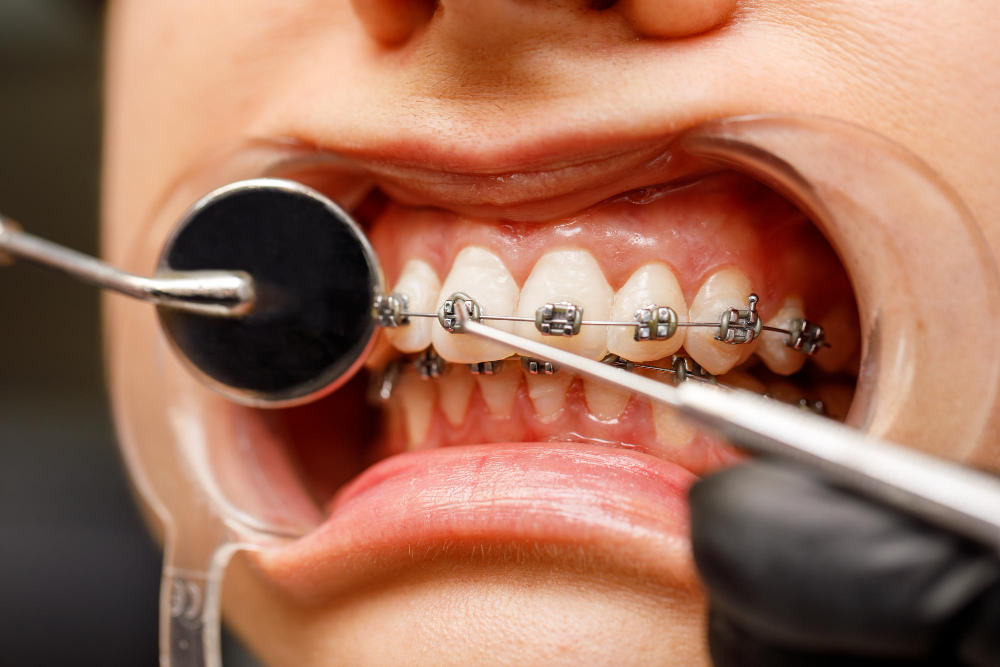Taking care of your gums and teeth is crucial, especially if you’re considering orthodontics. Gum recession and orthodontics often come up in discussions about oral health. While orthodontics, like braces, can be great for straightening teeth, they might also lead to gums receding after braces. This blog focuses on understanding how these treatments affect your gums and provides insights to empower you. With advancements in orthodontic practices, it’s vital to keep up with the best ways to maintain oral health.
Orthodontics: More Than Just Straight Teeth
When people think of orthodontics, they often picture straight teeth. But it’s more than that. Orthodontics plays a vital role in overall oral health. Treatments like traditional braces and clear aligners work wonders in aligning teeth. But how do they work?
Orthodontic devices apply gentle pressure to your teeth. Over time, this moves them into the right position. While they’re effective, many wonder: Can braces cause gum recession? Yes, the pressure from these devices can sometimes affect your gums. It’s essential to choose the right method and stay informed.
Understanding the various orthodontic treatment for gum recession can help you make the best choice. Each option has its benefits and limitations. Considering factors like comfort, duration, and oral health effects can lead to a well-informed decision. Remember, orthodontics is not just about aesthetics; it’s about improving overall dental health.
Gum Health: Risks and Prevention
Gum health is crucial for a healthy smile. Signs of gum recession include longer-looking teeth and sensitive gums. This happens when the gum tissue wears away, exposing more of the tooth or its root.
So, what are the reasons for gum recession? – Orthodontic pressure: The force applied by braces or aligners can cause gums to recede. – Oral hygiene negligence: Ignoring proper brushing and flossing, especially around braces, can lead to gum issues. – Genetics: Sometimes, it just runs in the family.
To avoid receding gums because of braces, it’s crucial to tackle these challenges early. Start with the basics:
- Brush properly: Use a soft-bristled toothbrush, and clean twice a day.
- Floss daily: Remove food particles trapped around braces to prevent plaque buildup.
- Visit your dentist regularly: Scheduled check-ups help catch issues early.
- Consider professional cleanings: Cleanings remove tartar and plaque, helping maintain healthy gums.
These steps are essential, especially during gum care during orthodontic treatment. A mouthwash recommended by your dentist can also reach areas often missed by brushing.
Treating gum recession early can stop further damage. Professional treatments might include cleaning the pockets around teeth or prescribed antibiotics to stop bacteria. In serious cases, surgery might be needed. But with regular care, such measures are often avoidable.
To maintain gum health with orthodontics, personalized treatment plans are key. Consider talking with your orthodontist about any concerns. They can advise you on the best ways to keep gums healthy while using braces or aligners.
Mitigating Gum Recession: Myths, Innovations, and Insights
There are many myths about gum recession and orthodontics. Let’s tackle a few common misconceptions: – Myth 1: Only adults experience gum recession. – Myth 2: Braces are the sole cause of receding gums. – Myth 3: Nothing can stop gums from receding once they start.
Scientific insights challenge these myths. For instance, while adults often experience gum recession, it can start at any age due to factors like genetics or poor oral hygiene. Moreover, while braces can contribute, they aren’t the only cause. Proper gum care during orthodontic treatment significantly reduces risks.
Technology plays a pivotal role in reducing gum recession risk factors. Innovations in orthodontic methods aim to apply gentler pressure, minimizing impact on gums. For example, clear aligners tend to be less taxing on gums compared to traditional braces.
In conclusion, maintaining healthy gums during orthodontic treatment is possible with the right approach. Consider these proactive steps: – Educate yourself about potential risks and prevention strategies. – Keep open communication with dental professionals. – Commit to regular dental hygiene and check-ups.
Staying informed and proactive ensures you make the best decisions for your oral health. Whether you’re starting orthodontic treatment or just exploring options, understanding gum health with orthodontics empowers you to keep that beautiful, healthy smile. Remember, your choices today pave the way for a healthier tomorrow.
